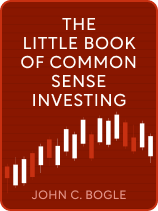

This article is an excerpt from the Shortform book guide to "The Little Book of Common Sense Investing" by John C. Bogle. Shortform has the world's best summaries and analyses of books you should be reading.
Like this article? Sign up for a free trial here.
Do mutual funds charge fees? How much should you expect to pay in mutual funds fees? What other costs and charges should you expect to incur when investing in a mutual fund?
Before investing in mutual funds, it’s important to consider all the fees and charges you’ll incur. Unlike index funds, mutual funds are actively managed so they incur significant costs for investors.
Here are three areas where mutual funds cost more than index funds: expense ratios, sales charges, and portfolio turnover.
Cost 1: Expense Ratios
Mutual funds and index funds alike have expense ratios—the percentage of the fund’s assets that goes to operating expenses, like marketing, administration, and portfolio management. Because they require active intervention, Bogle claims that mutual funds’ expense ratios are substantially higher than those of index funds.
In particular, Bogle asserts that the average mutual fund’s expense ratio is about 1.3% annually. So, if a mutual fund had $100 million in assets, $1.3 million is dedicated to operating expenses—leaving $98.7 million to actually invest. Conversely, the TIF’s average expense ratio is about 0.1% annually. So, if the TIF had $100 million in assets, only $100,000 would be dedicated to operating expenses, leaving $99.9 million to invest. This means that about 1.3% of the average mutual fund investor’s assets, compared to 0.1% of the average index fund investor’s assets, is deducted for operating expenses.
Bogle concedes that not all mutual funds are created equal. For example, between 1991 and 2016, mutual funds in the lowest-cost decile had expense ratios of 0.32%. On the other hand, mutual funds in the highest-cost decile had expense ratios of 2.4%. Still, while there’s variance in mutual funds’ expense ratios, TIFs have lower expense ratios than mutual funds across the board.
Cost 2: Sales Loads
In addition to higher expense ratios, mutual funds also often have sales loads—charges that investors pay to agents who sell the mutual funds. Though Bogle doesn’t provide exact data, he estimates that sales loads can easily cost mutual fund investors 0.5% per year. This means that if you invest $100,000 in a mutual fund over a year, $500 would be deducted as a sales charge—even if your stocks decreased.
(Shortform note: There are three different ways that mutual funds charge sales loads. First, some mutual funds charge back-end loads that only apply when investors sell their mutual fund shares. Second, some mutual funds charge front-end loads that function as a single fee paid when investors purchase mutual fund shares. Finally, some mutual funds charge level loads that are deducted annually from investors’ assets.)
By contrast, TIFs typically don’t have any sales loads. So, while many mutual fund investors spend around 0.5% of their assets on sales loads each year, investors in index funds aren’t saddled with these costs.
(Shortform note: Although the vast majority of index funds don’t charge sales loads, experts note that some index funds managed by mutual fund companies do. Consequently, they recommend investing in index funds through companies like Vanguard and Fidelity, which don’t charge sales loads.)
Cost 3: Portfolio Turnover
Another difference between mutual funds and index funds is portfolio turnover—basically, the ratio of a portfolio’s total assets to its total purchases and sales. Because higher portfolio turnover creates more fees, such as commissions to stockbrokers, Bogle claims that mutual funds cost investors more money due to their higher turnover rates.
In particular, Bogle suggests that turnover costs are approximately 1% of turnover rate. To illustrate, a mutual fund with 40% turnover would cost investors about 0.4% in associated mutual fund’s fees. Moreover, Bogle observes that in 2016, sales and purchases within mutual funds totaled $6.6 trillion, or 78% of the total $8.4 trillion in mutual fund assets. Consequently, he concludes that the average mutual fund costs another 0.78% to its investors.
By contrast, because index funds are held indefinitely, they have little-to-no turnover costs. In fact, Bogle states that the TIF’s annual portfolio turnover is about 3%, costing investors a minuscule 0.03% of their assets.
The Hidden Cost of Taxes
In addition to turnover fees, Bogle also argues that mutual funds lose more money to taxes because of their high turnover rates.
Mutual funds are tax-inefficient, Bogle claims, because stocks held for less than a year are considered short-term gains. Further, because short-term gains are susceptible to personal income tax, mutual funds with high turnover rates can leave investors on the hook for personal income tax—up to 37% for the highest tax bracket.
Profit from index funds, on the other hand, is considered a long-term gain, since index funds are normally held for longer than a year. Consequently, index fund investors only pay a capital gains tax, which is normally 15%. So, Bogle concludes that mutual funds cost investors more in taxes than index funds.

———End of Preview———
Like what you just read? Read the rest of the world's best book summary and analysis of John C. Bogle's "The Little Book of Common Sense Investing" at Shortform.
Here's what you'll find in our full The Little Book of Common Sense Investing summary:
- A simple winning strategy for novice investors
- Why index funds are superior to mutual funds
- Why bonds belong in your investment portfolio






